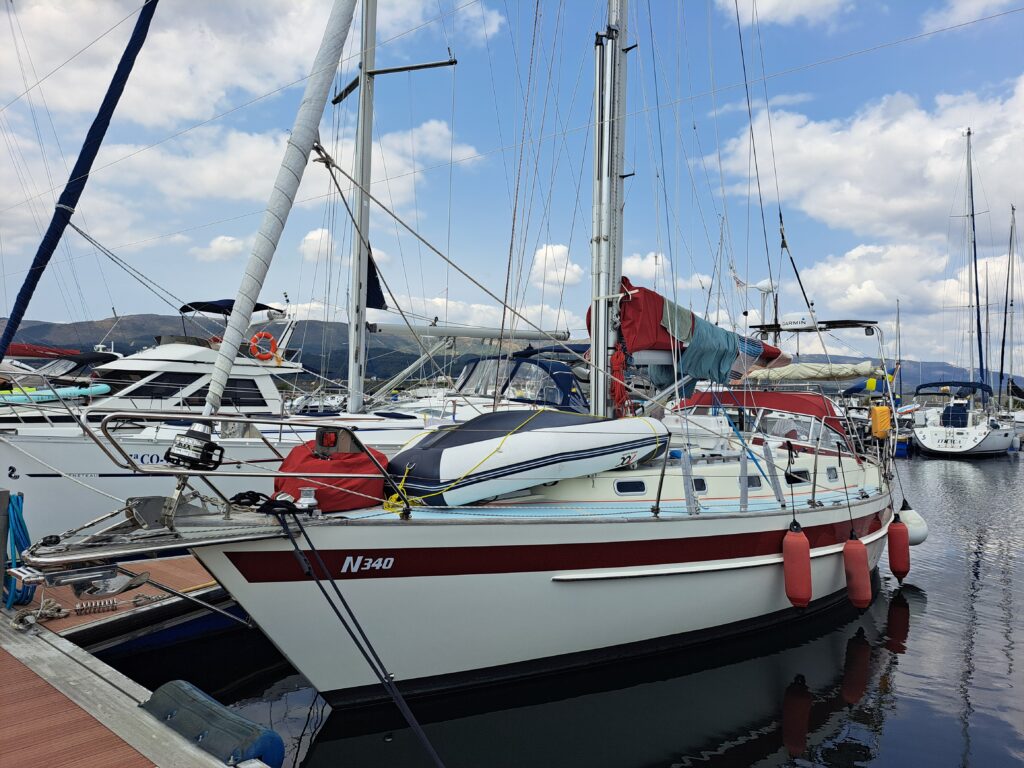
We arrived in Cabo de Cruz hoping to find support to solve our outboard engine problem and get the broken part of the windvane welded. We were hoping to get them fixed within 2 days. Instead everything got fixed in just a few hours thanks to an efficient harbor master with a lot of contacts and thanks to the kindness of people willing to help even though they were already busy with other works. The small arm of the actuator of the windvane that cracked got welded back in place. The Yamaha mechanic cleaned the carburator of our outboard engine that was dirty. That was the reason for the engine not starting. Cleaning the carburator was probably something we could have done ourselves although we have never done it before, but the Yamaha mechanic for sure did it faster, was cheap and it was good to have him confirming that the dirty carburator was the only reason the engine was not starting.
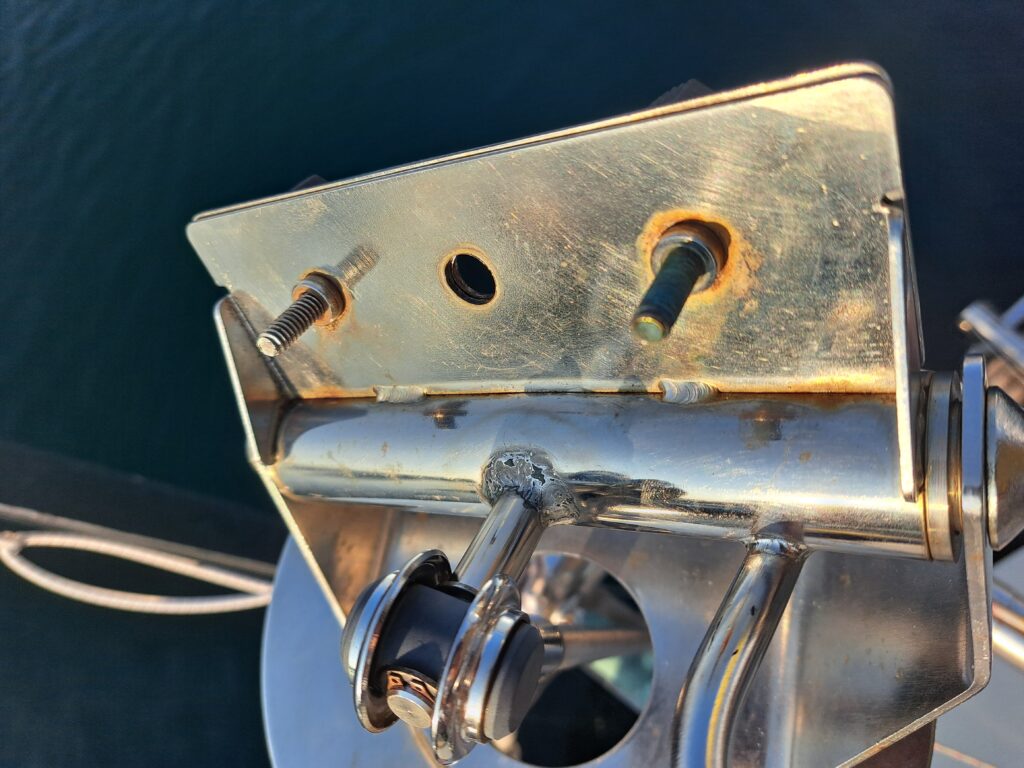
With our problems solved this fast we ended up with plenty of time to enjoy the rest of our first day in Cabo de Cruz and spent the afternoon at Playa de Ribeira Grande. For Emilien it was the first swim of the trip.
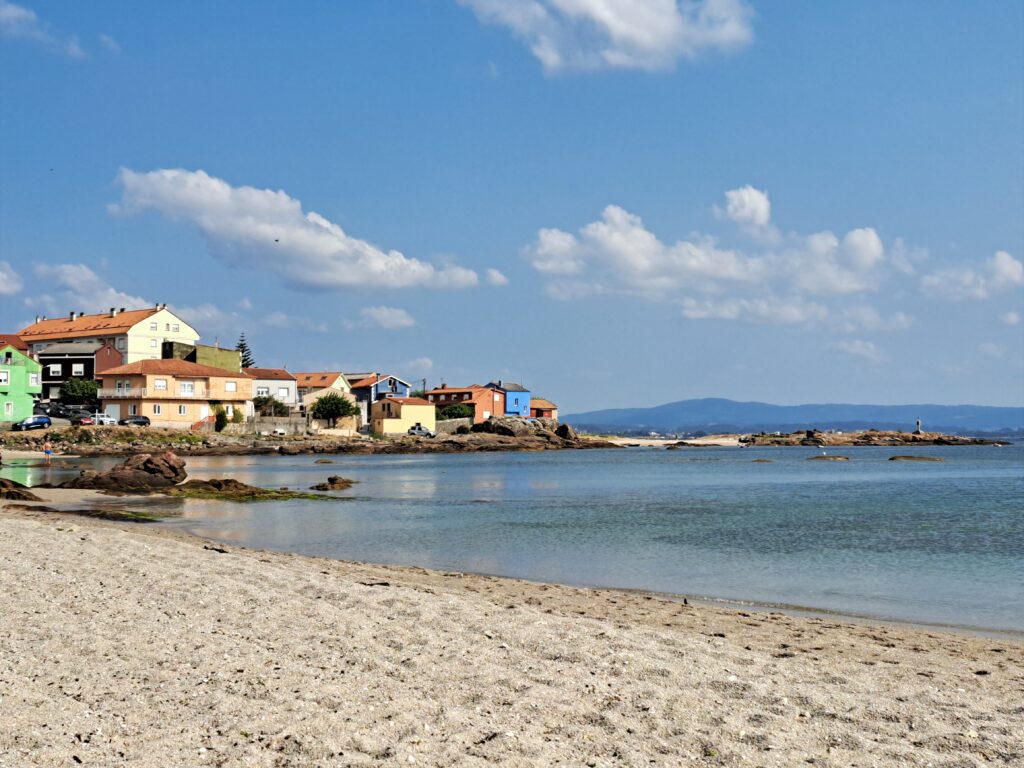
We then had the entire Friday (August 22) free and took a bus to Santiago de Compostela. For Maria it was the opportunity to walk once again over her own footsteps when she was an exchange student at the university of Santiago de Compostela and later as pilgrim. So lovely to be back.
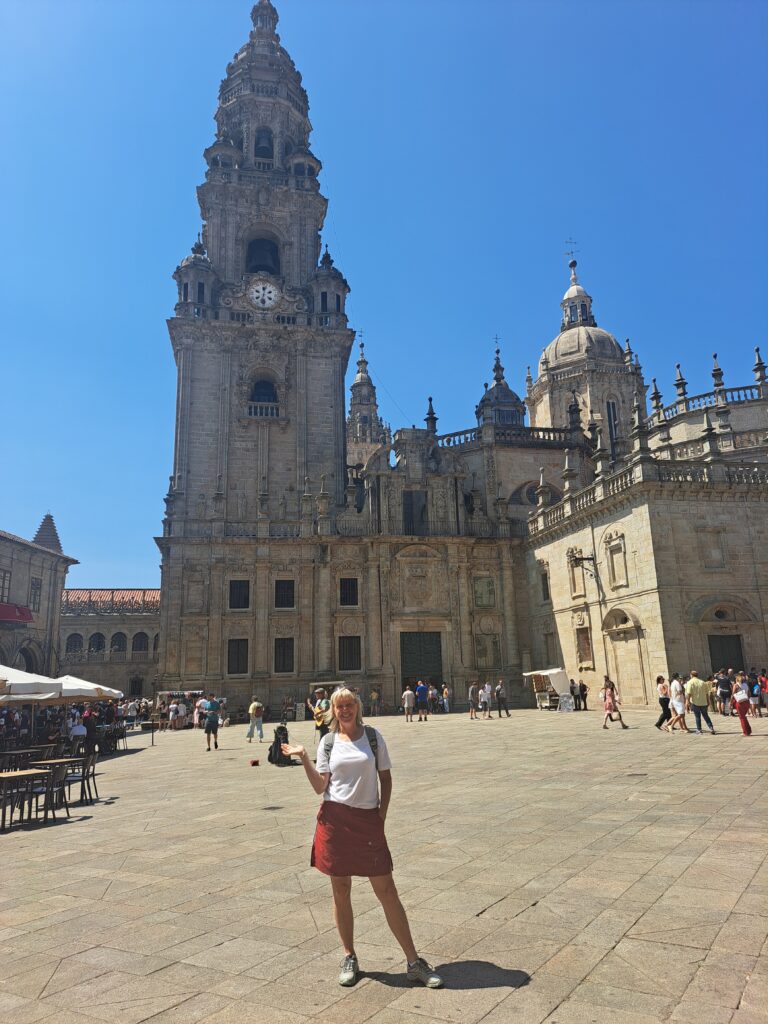
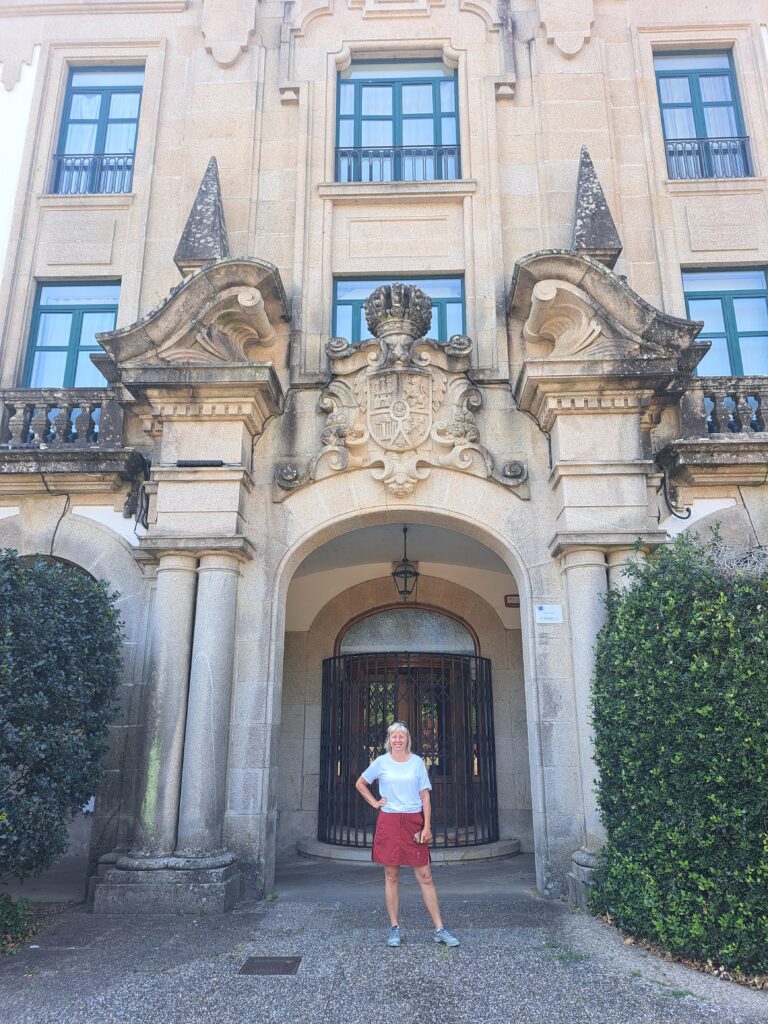
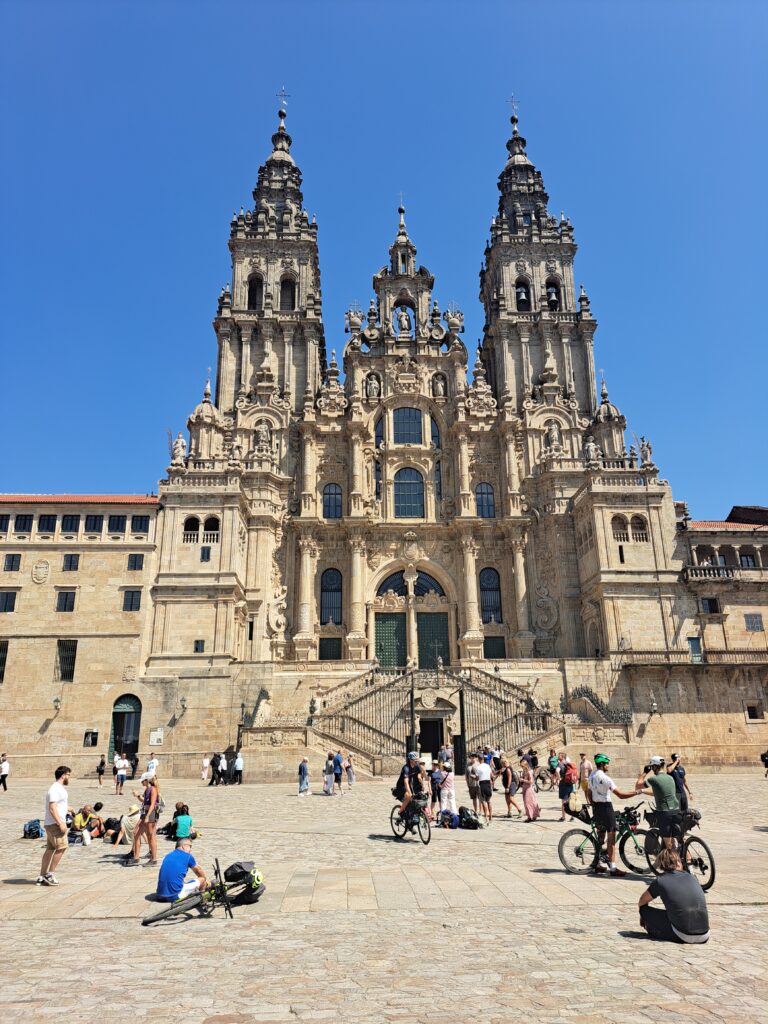

After a full day on land far away from the sea, we decided it was time to get back to sea and head towards Isla de Ons, which is one of the islands of the nature reserve Atlantic Island of Galicia (the access and anchoring to these islands requires authorizations requested and granted in advance). We got the boat ready for the short trip (15 Nm) on Saturday (August 23) but just prior to departure, we got information via whatsapp from S/Y Alba, via VHF channel 16 and Channel 64 (Estación costera Vigo) of presence of killer whales in and outside of Ria de Arousa including some physical interactions with other sailboats. To play safe, we chose to wait one more day in Cabo de Cruz to see how things were developing. Our sailing day towards Isla de Ons turned into a relaxing day with some beach time.
We left Cabo de Cruz the following day as no further reports of presence of killer whales in Ria de Arousa had been reported. We progressed on engine on flat water as no wind was blowing that morning. On the way out through Ria de Arousa, we spotted several groups of dolphins that we believe were bottlenose dolphins, a little bit bigger than the dolphins we were used to meet until then. We then anchored along Isla de Ons around midday after just 3 hours of motoring.
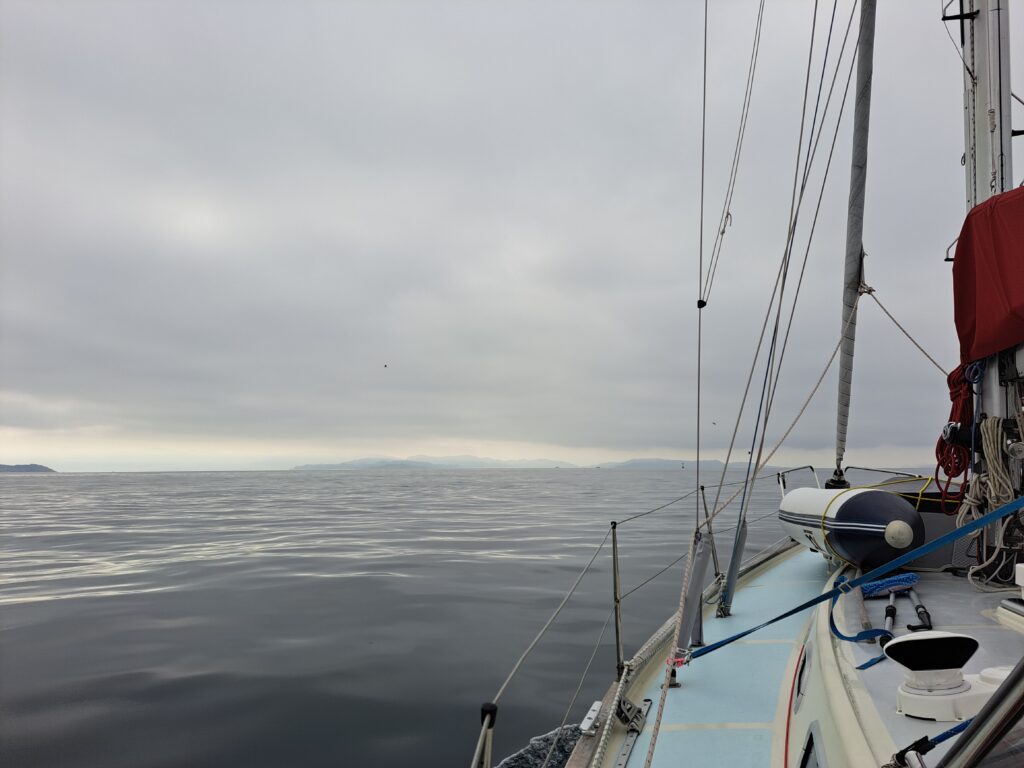

After lunch, we prepared the dinghy for going to land. We lifted it from the deck, dropped it in the water and mounted the outboard engine. Then came the time to start the outboard engine for the first time since we got the carburator cleaned … and without surprise … it started! Seeing the outboard engine running felt truly like a liberation for both of us! We motored to the beach in just five minutes instead of rowing for twenty minutes as we had to do in Muros. The dinghy is not really designed to glide on the water so it is quite of an effort to row long distances.
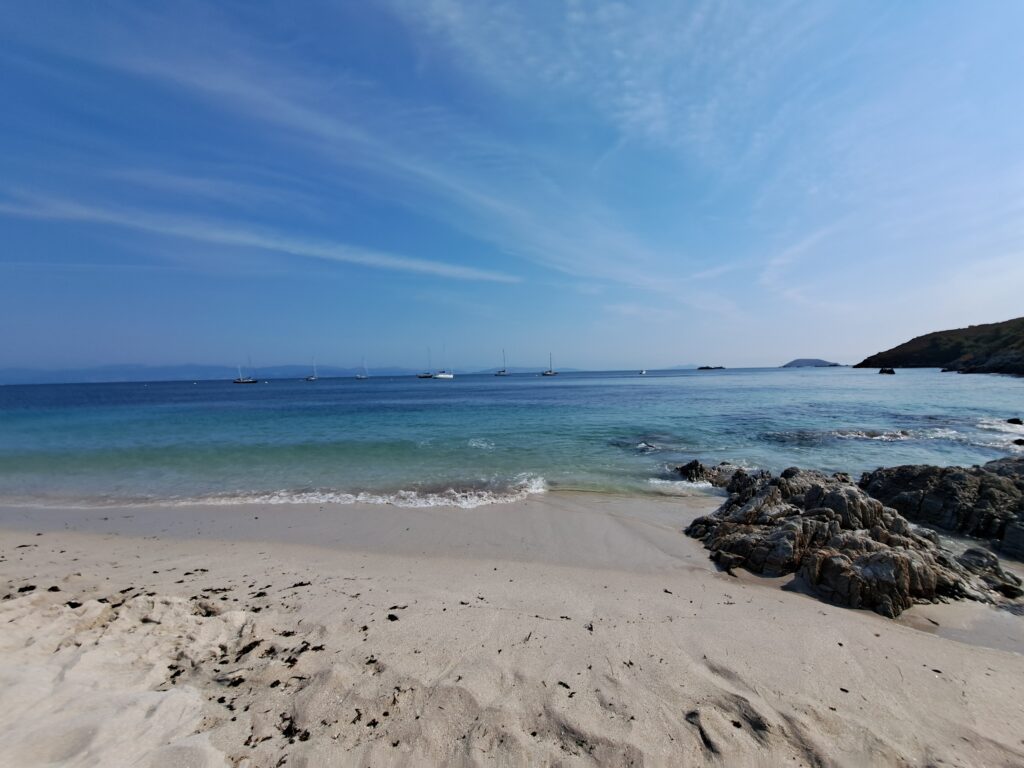
After the celebration on having a working engine and a fully recovered freedom, we walked around the island under a magnificent clear sky and ended the tour with some time on the beach. Later in the afternoon, the warm and clear sky left space to a fresh breeze and fog so we went back on Lovisa and ended our day with a nice dinner and some wine.

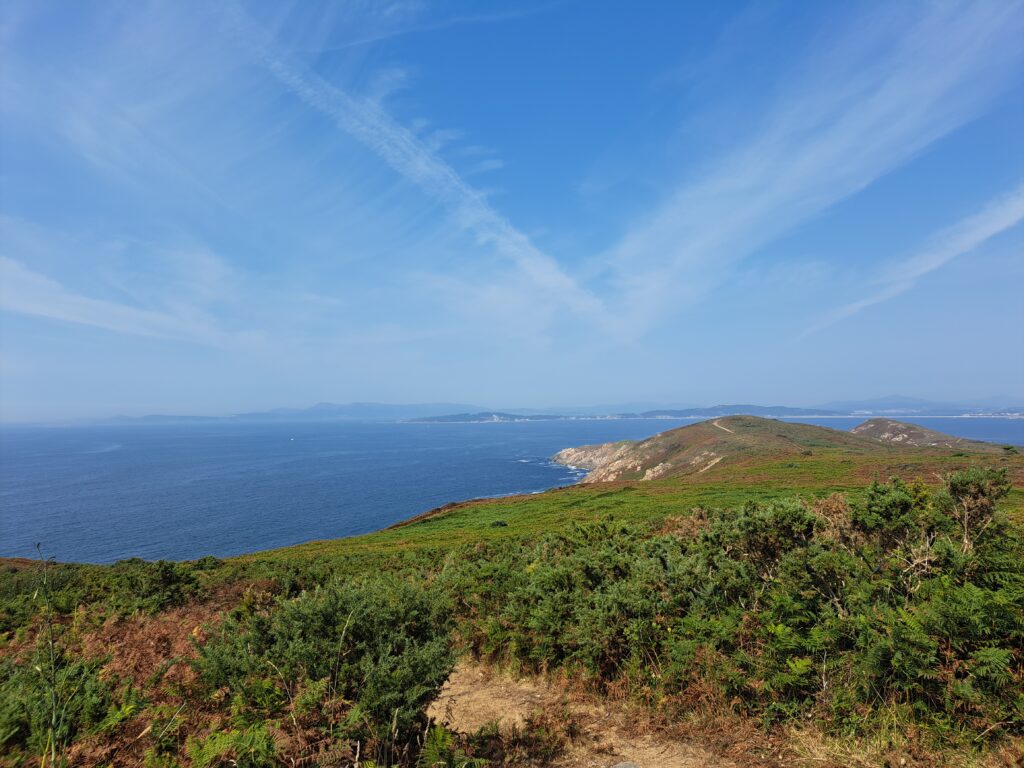
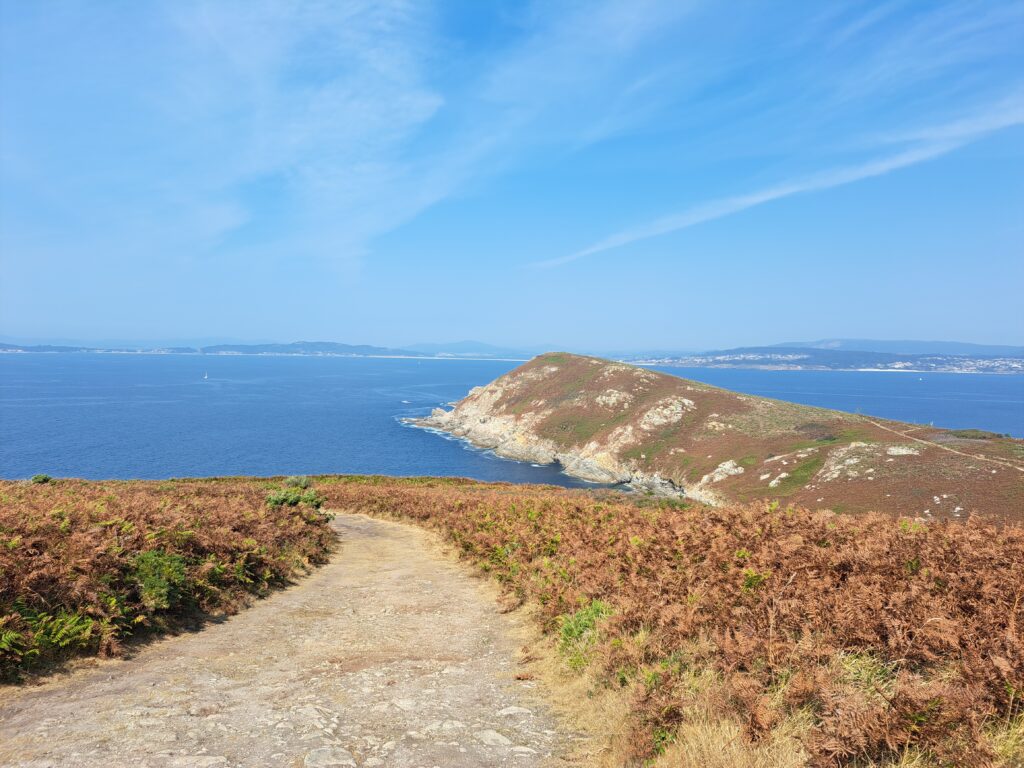
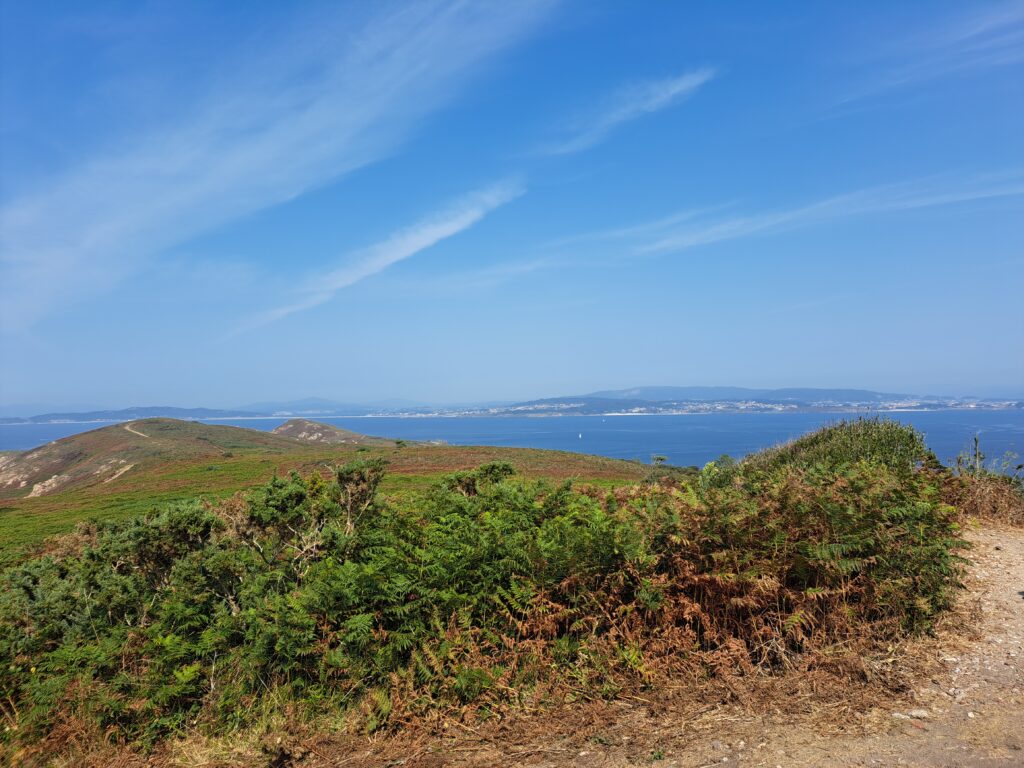
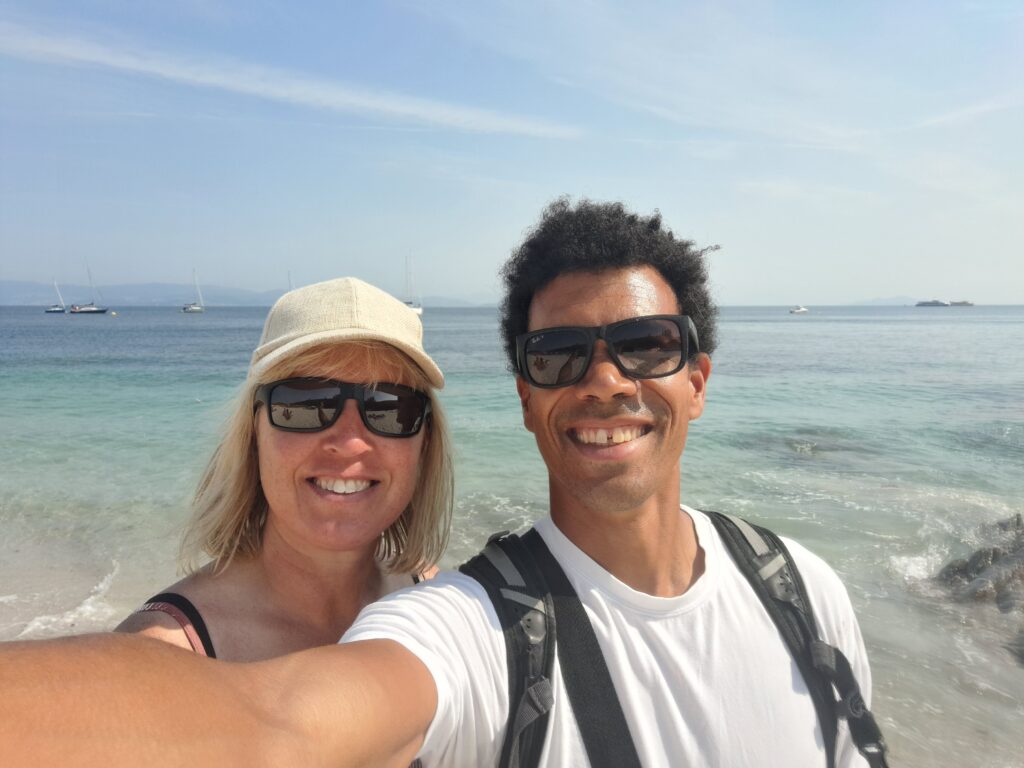

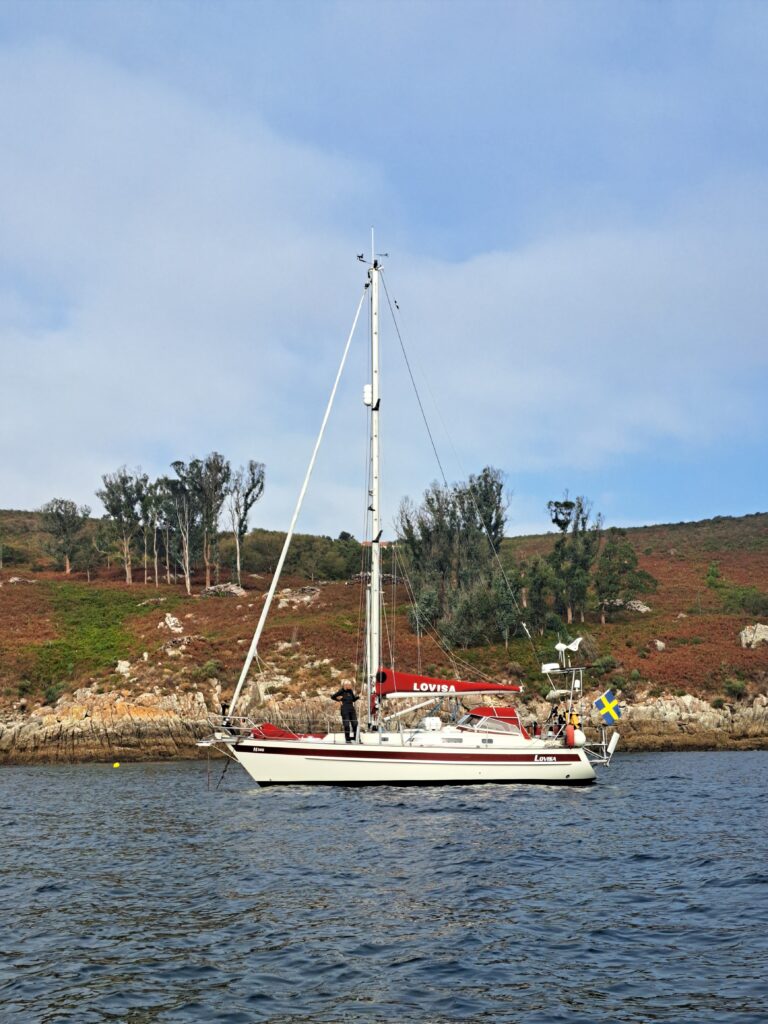
The day after, Monday (August 25) we lifted the anchor to move towards Sanxenxo. Even though we were very eager to anchor as much as possible while sailing in Spain, we moved to a harbor to get better protection from the waves that were expected to increase to 3-4 m height due to ex-hurricane Erin (a hurricane that hit the Caribbeans and the east coast of US previous weeks and now approaching the coasts of Ireland). Being unsure about what to expect, we chose to look at the evolution from a protected harbor place.
Sanxenxo is another harbour that Lovisa is familiar with because she made a stop there 21 years ago. In Sanxenxo we met again our friend from S/Y Texas White Lady. Besides us, there were only a few other foreign boats, the rest were boats showing Spanish flags. Sanxenxo seems to be a very touristic city with a lot of people in the streets all day long and, unfortunately for our sleep quality, also all night long.
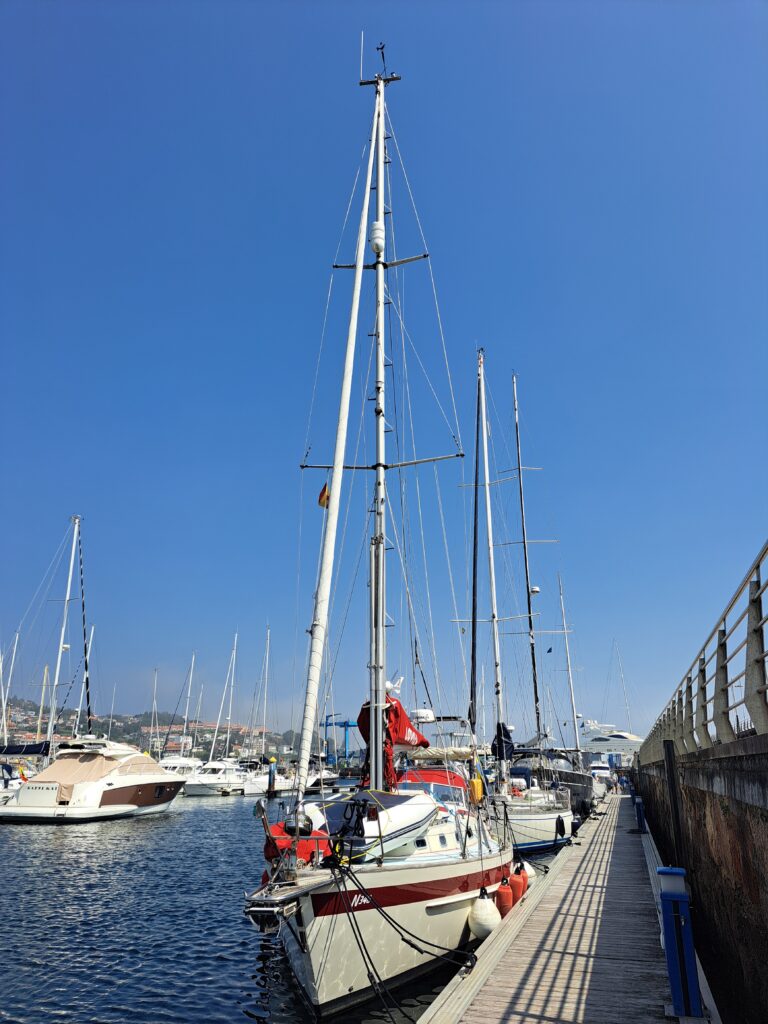
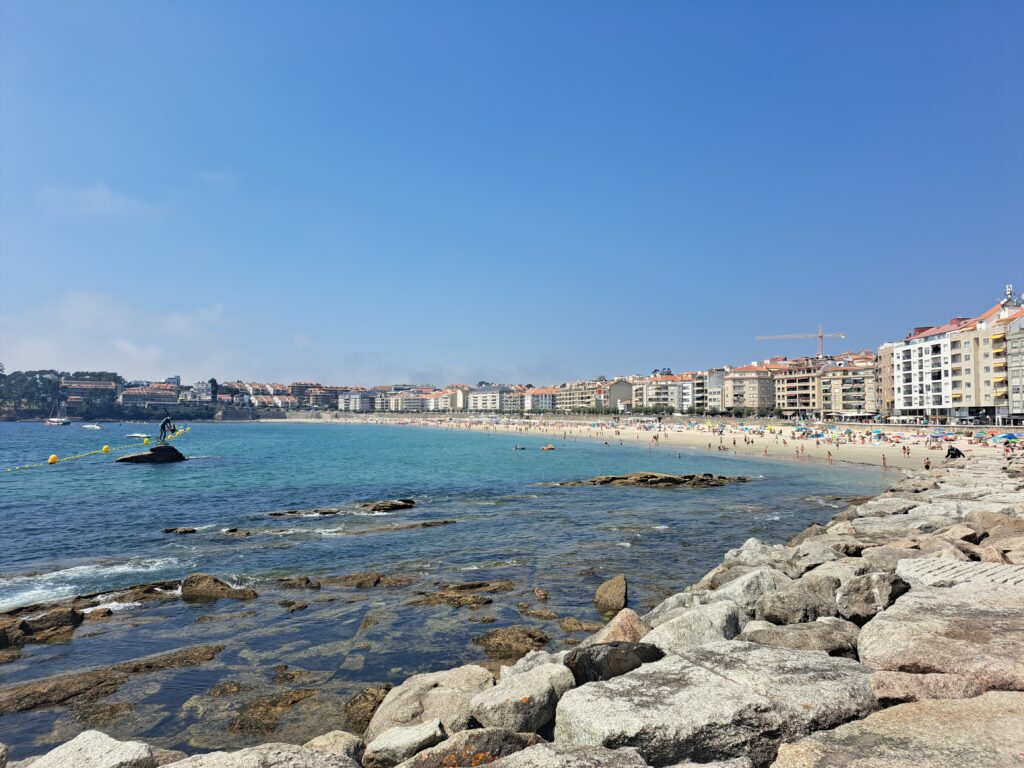
On Wednesday (August 23) as the forecast was showing a decrease in the height of the waves we decided to move to Islas Cies. We were hoping the anchorage there would be protected from the swell. On the way to Islas Cies the swells increased slowly to reach about 3 m while cruising between Isla de Ons and Islas Cies. Nothing really to be worried about although it got a bit uncomfortable. As we were hoping, the swell decreased as soon as we got the protection from Islas Cies.
We arrived to Islas Cies at around 13 and anchored just off the fantastic sand beach Playa de Rodas protected from the swells coming from northwest. The opposite coast of the island was showing a much more dramatic spectacle with big waves smashing against the rocks… not a good anchorage!
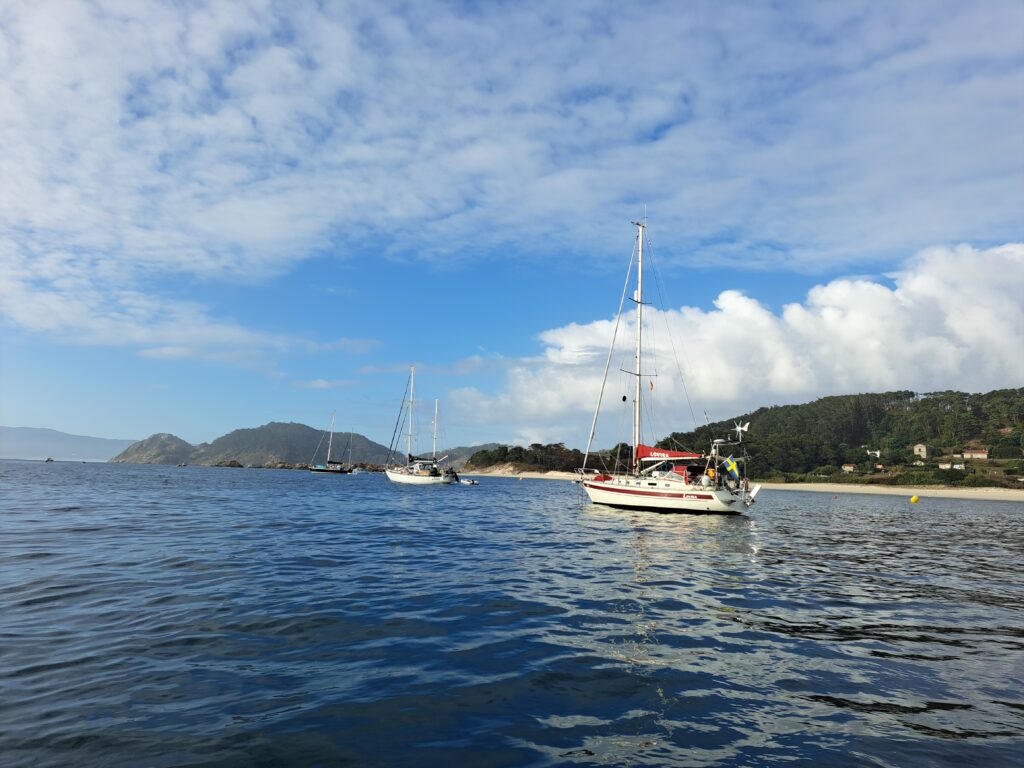
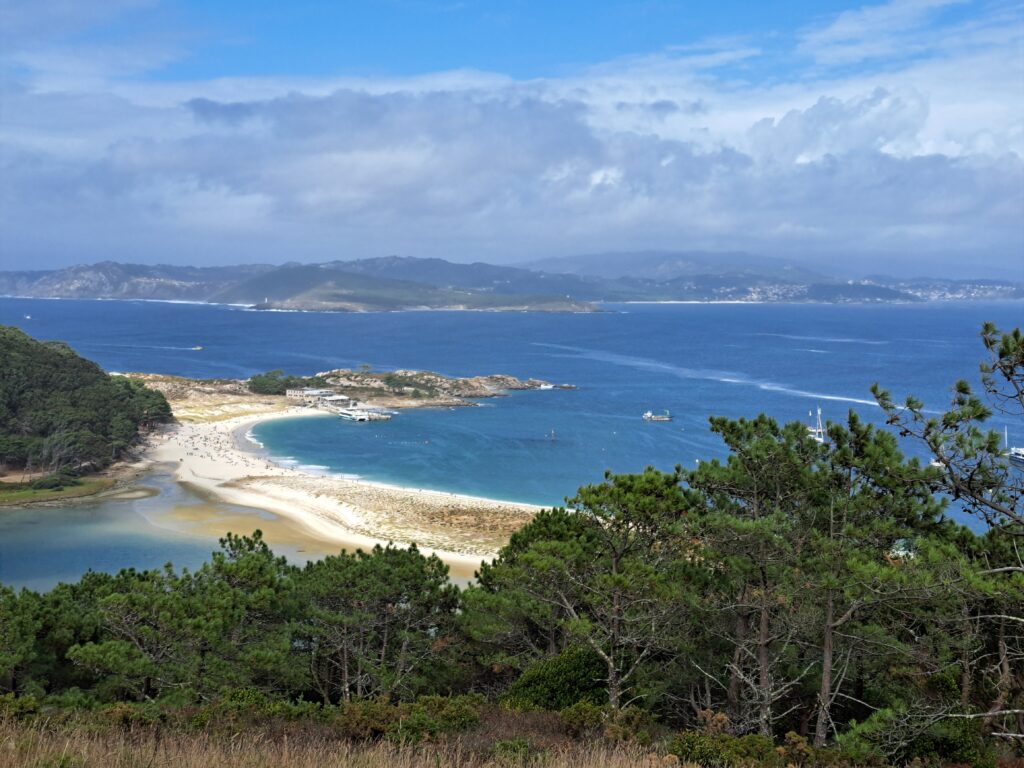

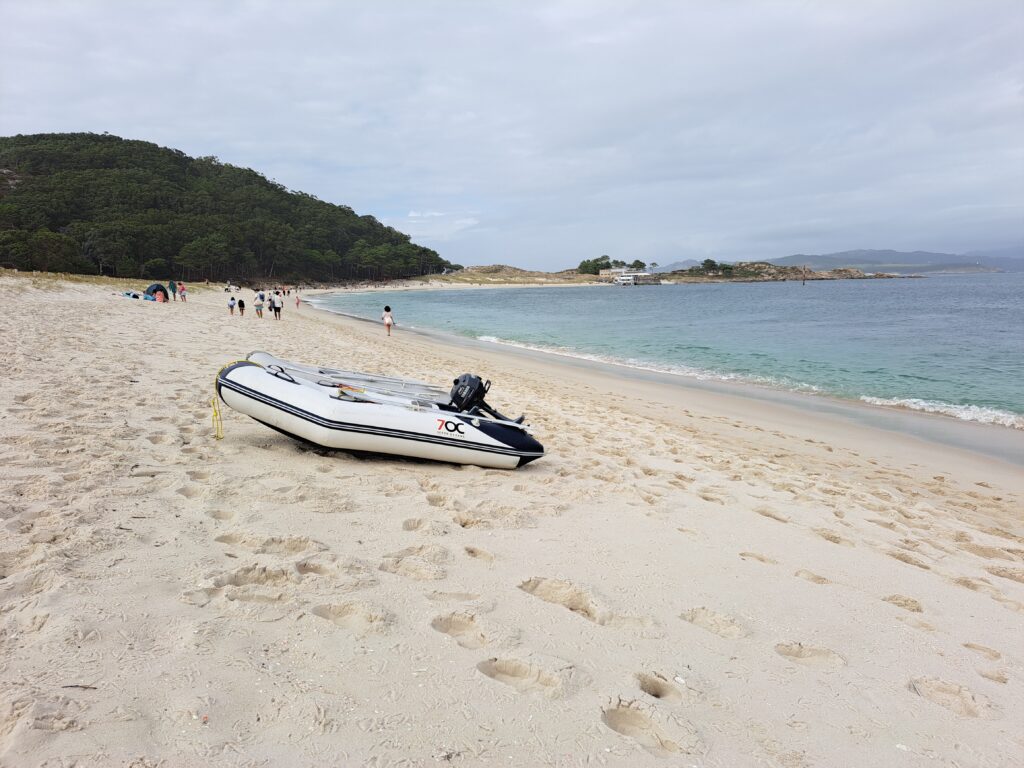
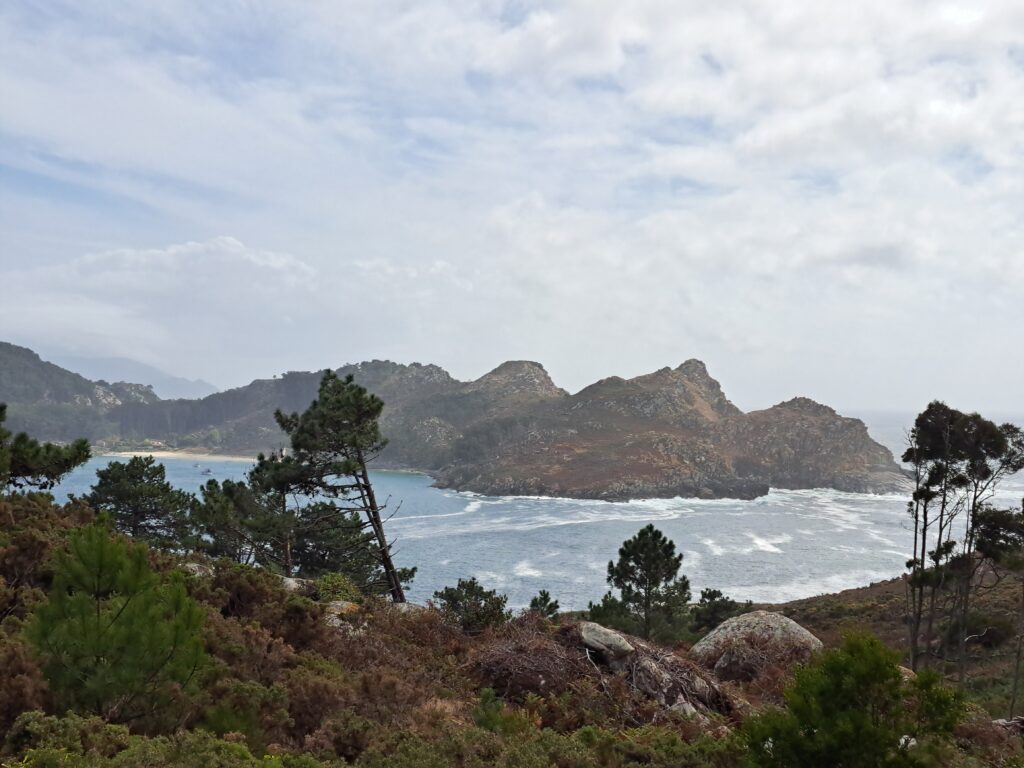
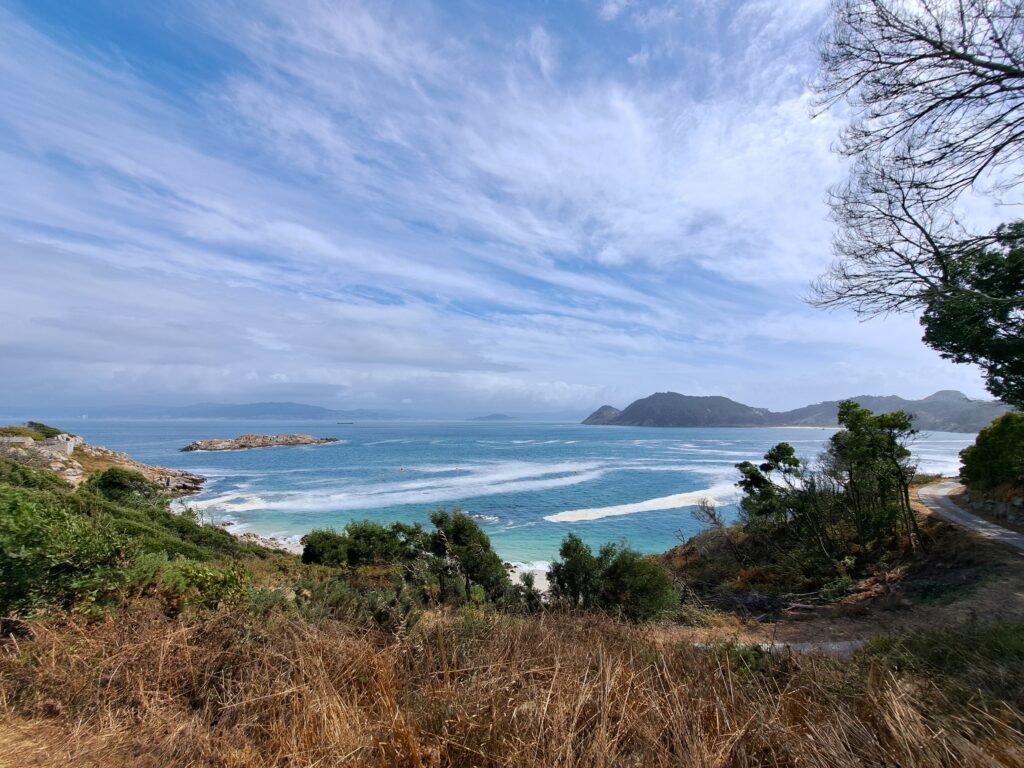
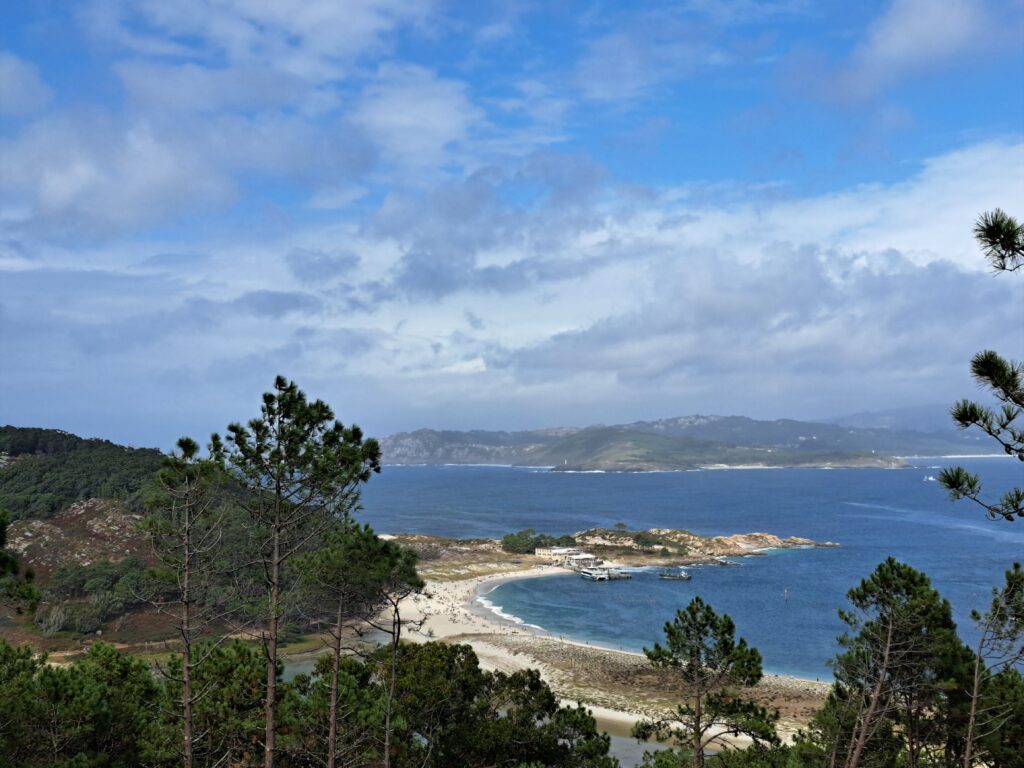
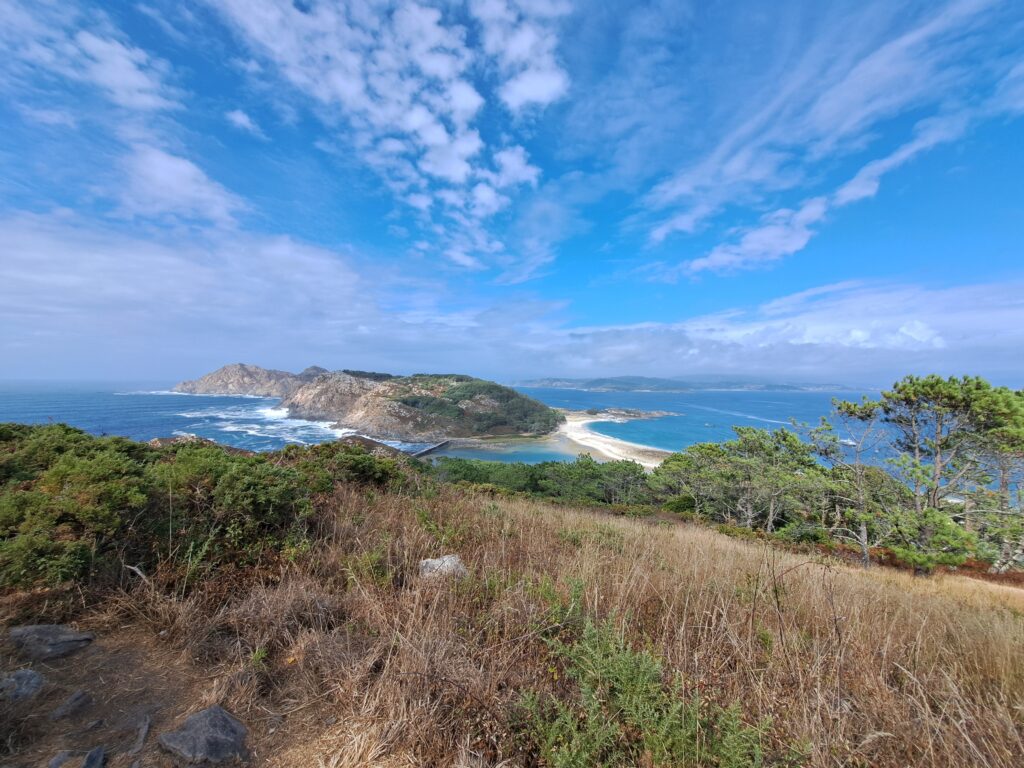
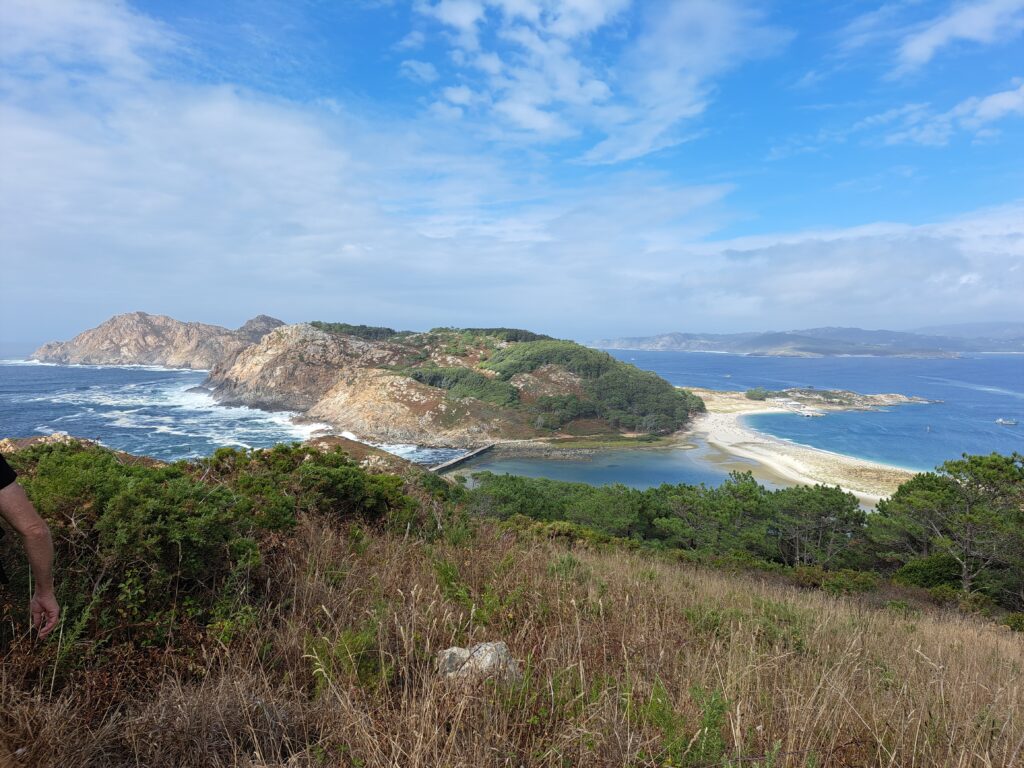
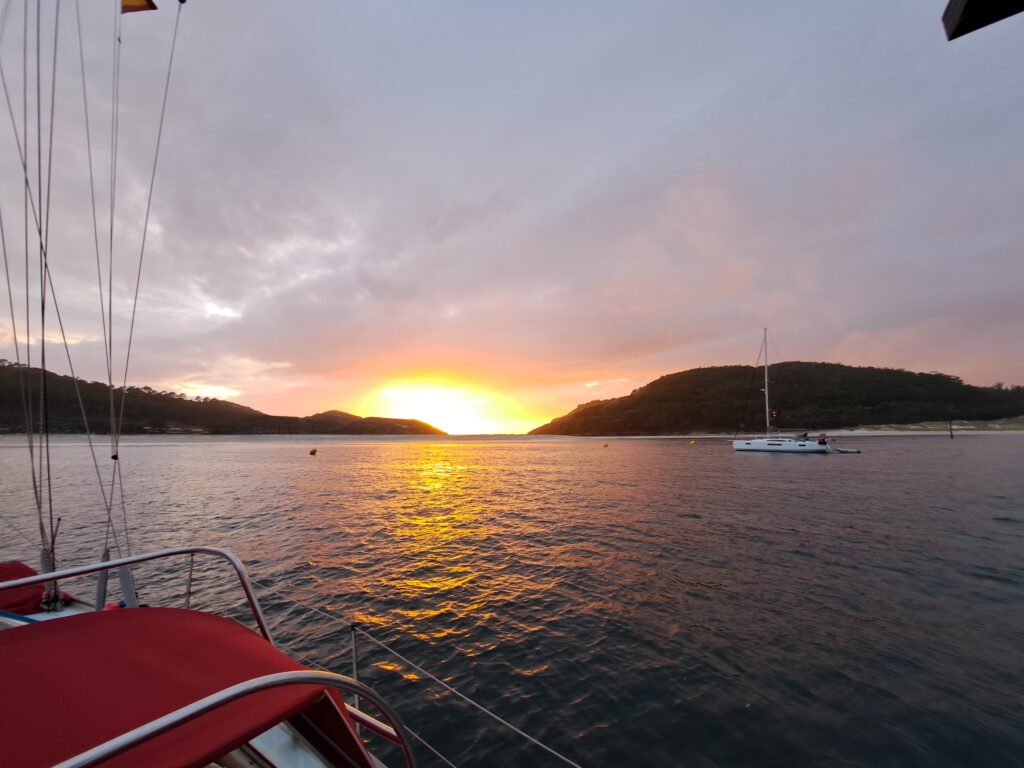
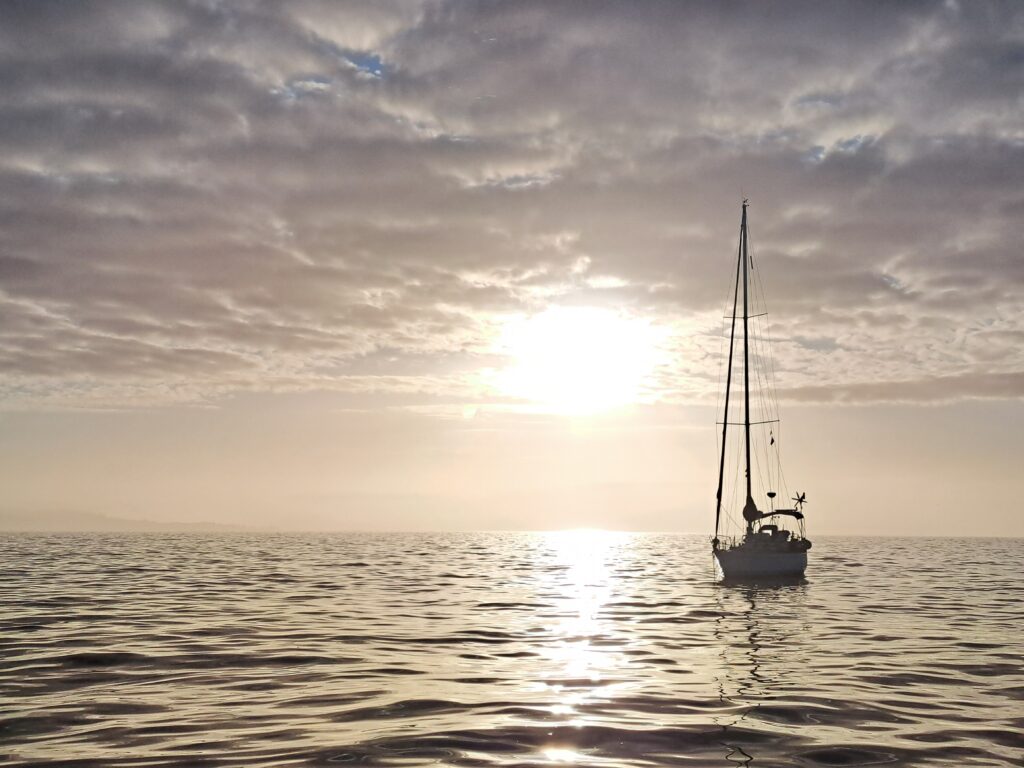
Although the island was protecting us to a great extent from the swell coming from the Atlantic, we still had a lot of residual swell entering the anchorage making the boat dancing all night and leaving us with very little sleep … if any at all. But the beauty of this place was worth the bad sleep.
As before, we set up an anchor alarm on the plotter for the night so we could be warned if the position of the boat moved outside a circle that we defined ourselves. We set the center of the circle where we dropped the anchor and as “maximum allowed radius” a bit less than the length of the chain we dropped in the water. If the boat moves outside of this circle it could mean that the anchor has been dragging.
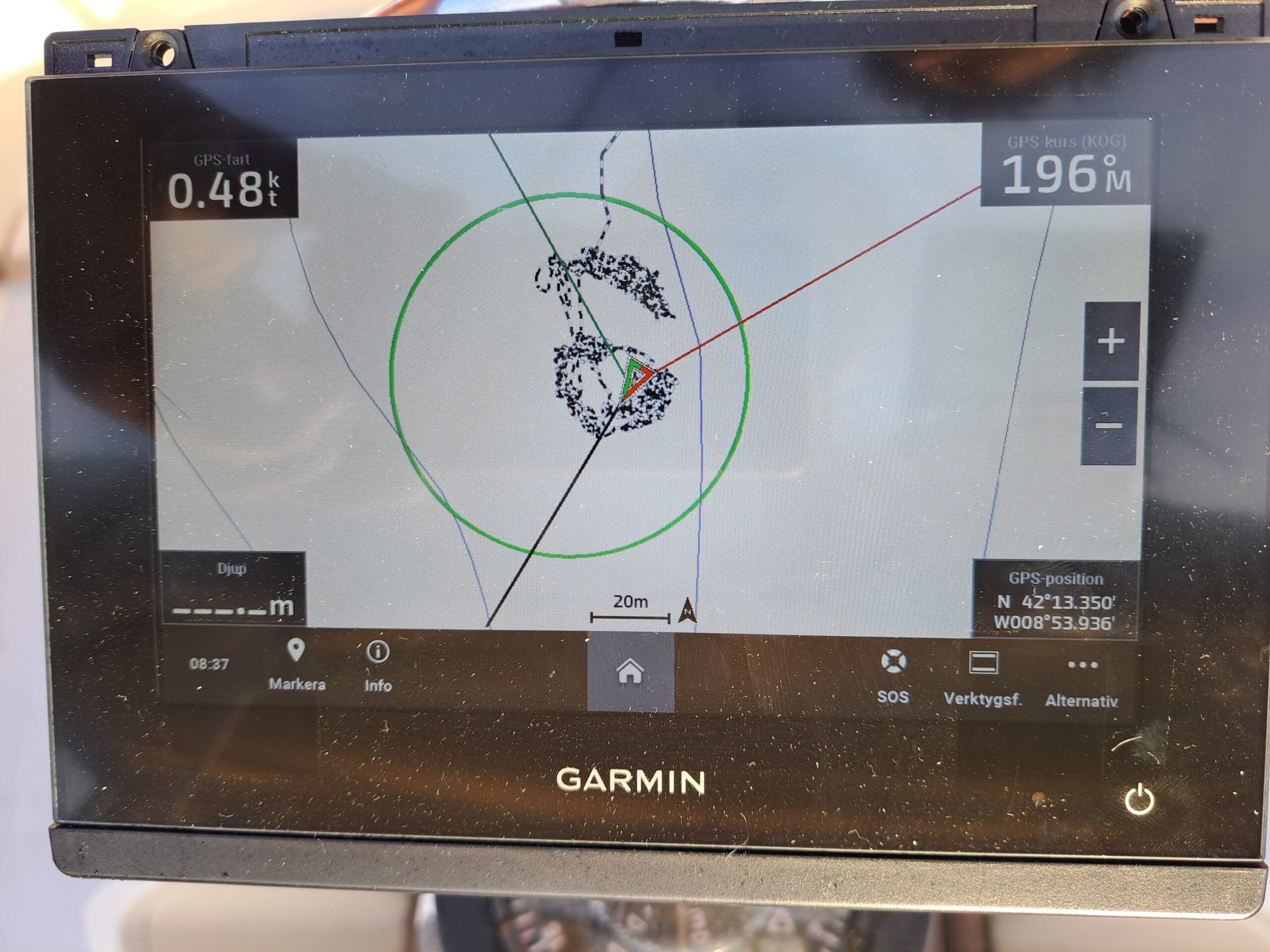
On Thursday morning (August 28) we finally managed to get in touch with an HF radio expert in Vigo available to support us with checking what is going on with our radio (a problem we had since the beginning but could not solve) so we decided to move to Vigo to meet them.
We arrived in Vigo after just an hour and a half motoring under a lovely sunny weather. On arrival we got warmly welcomed by Maria’s friend Begoña who is living in Vigo and who invited us to enjoy a Spanish lunch at her place. The Chef offered, tortillas, salad with melted rulo de cabra (goat milk cheese), fried pimiento de Padrón (non spicy green pepper that got their name from the town of Padrón in Galicia) and Ternera Gallega (beef meat from Galicia). With this, a little bit of Galician cider that tasted very similar to the cider offered in Brittany. As a desert, some Galician cheese with home made membrillo (a kind of marmelade made with quince fruit) and coffee. What a great welcome in Vigo!
Happy about the food experience we all got back to the boat. It was only then that we realized that there was a huge concert scene getting set up just beside the dock. Our hopes for a peaceful nights sleep broke into pieces.
On Friday we got the expert coming onboard to check our HF radio that actually appeared to be ok in the end. Although the grounding was not optimal the problem seemed to be that the tuner doesn’t tune right at first attempt and one needs to try tuning several times. In any case, for the first time we could be heard by someone on the other side! … but we couldn’t hear the answer … but being heard was still a step forward. More testing will be done.
We spent the rest of the day visiting Vigo with Begoña.
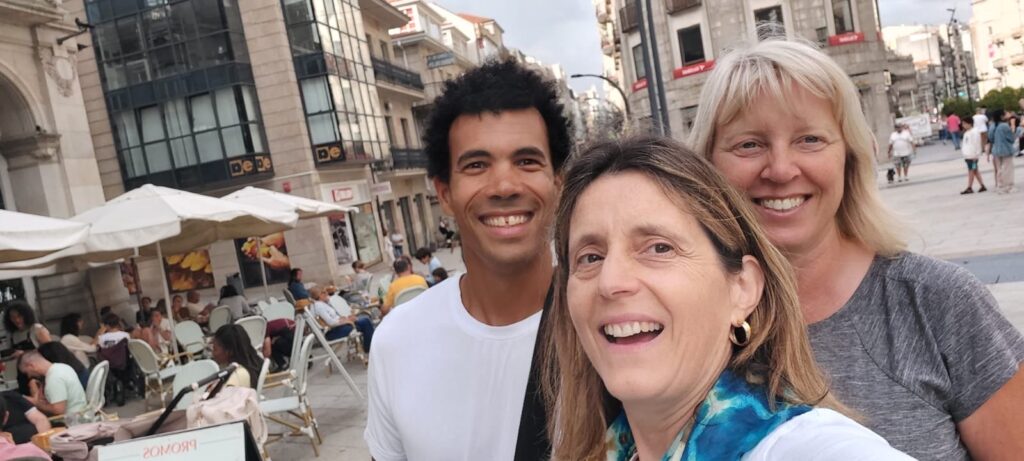
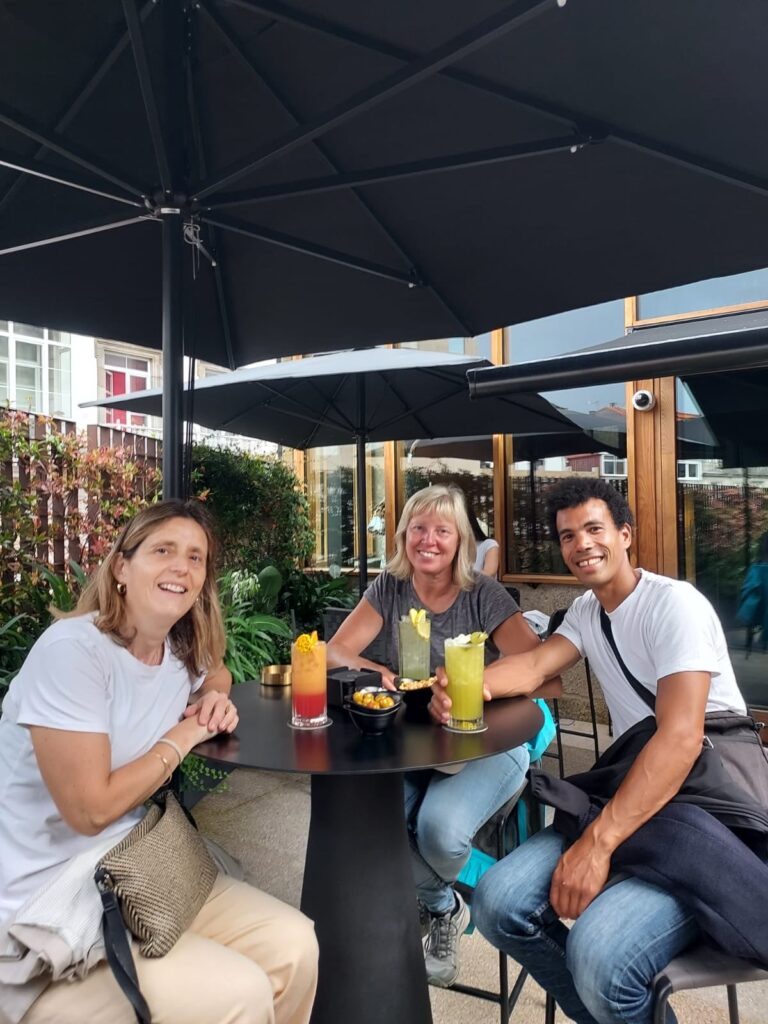
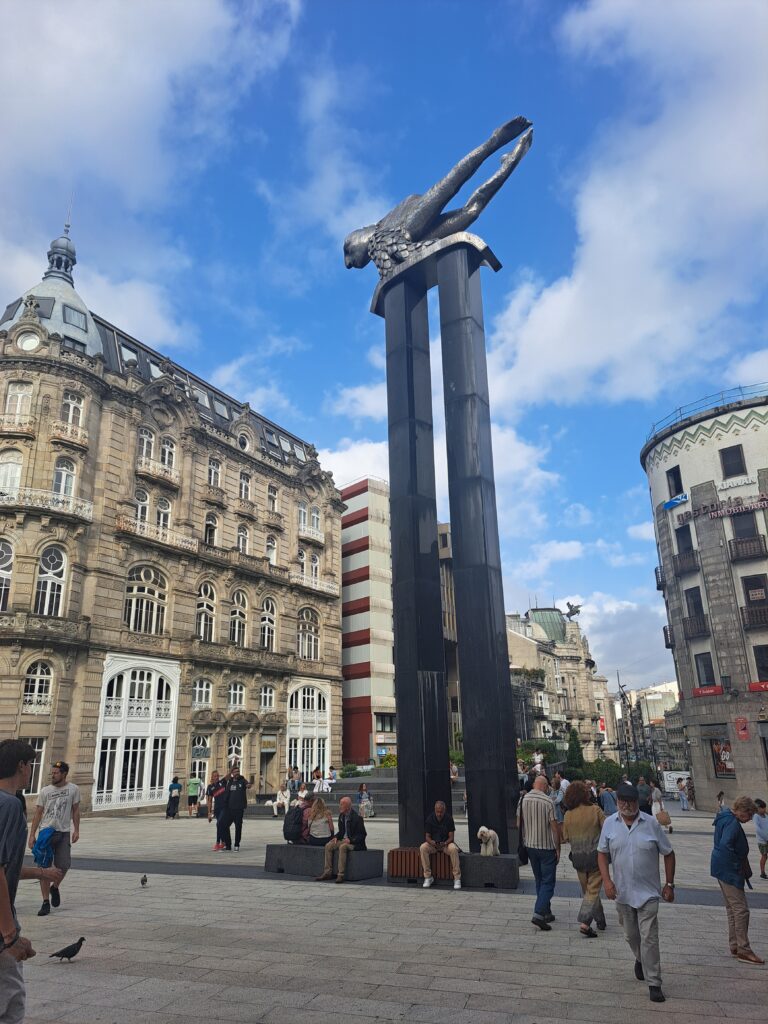
After three fantastic weeks with unusually sunny weather in Galicia we started to feel it was time for us to continue our way south. These weeks were very relaxing compared with our previous legs through the English Channel and Bay of Biscay. On Saturday (August 30), we decided to anchor outside of Baiona for then leaving the day after towards Portugal. On that short 10 Nm trip we enjoyed the company of Maria’s friend for her first time sailing under a lovely breeze.
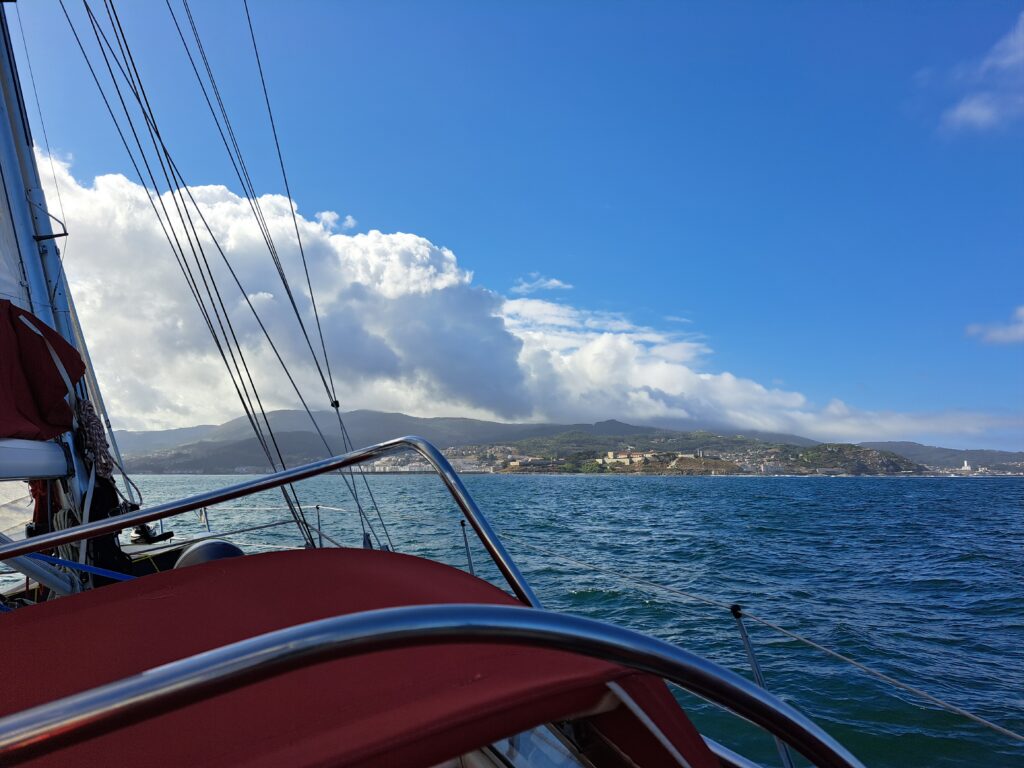
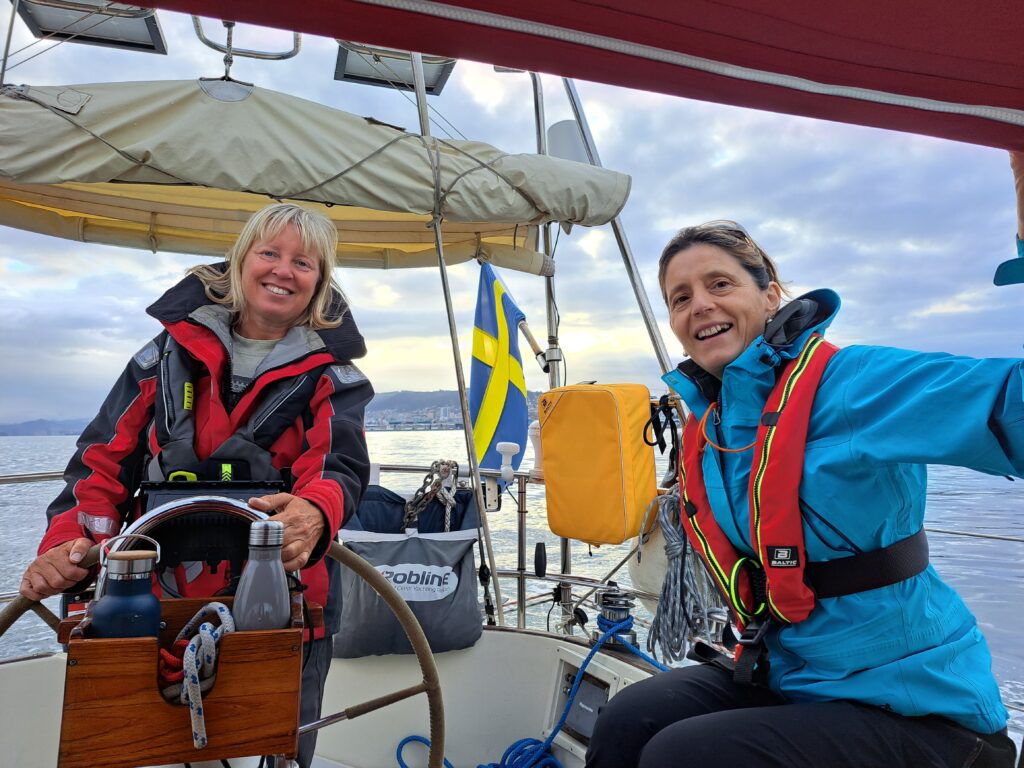
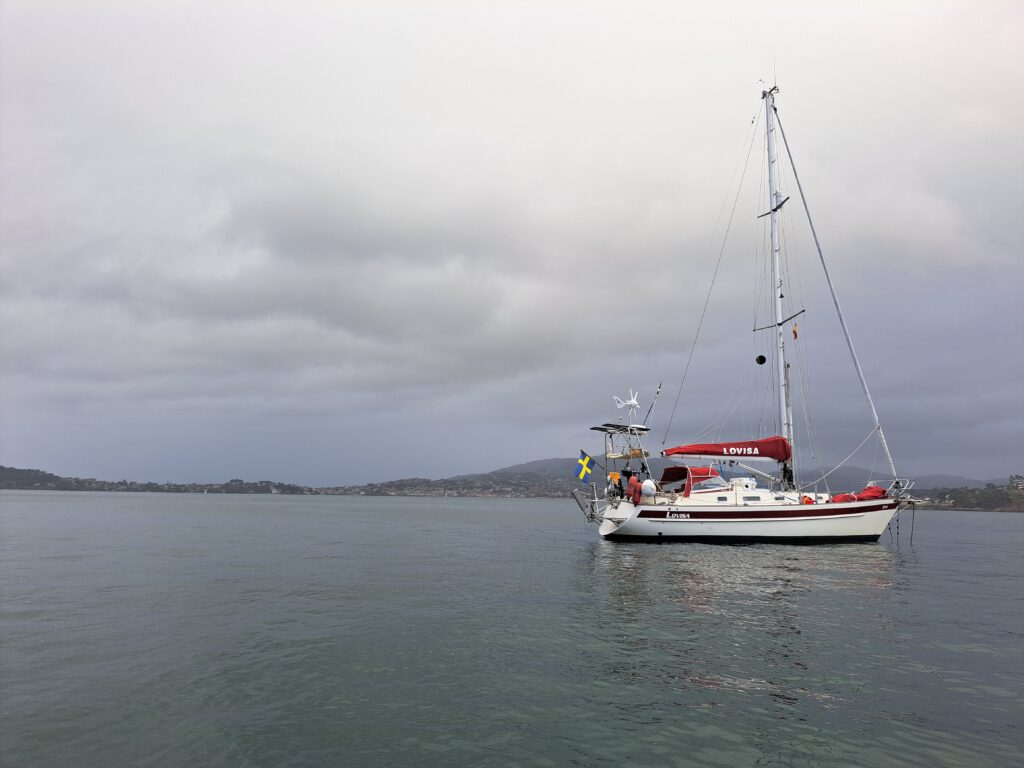
On Saturday (August 31) we left Baiona, Galicia and Spain and headed towards Portugal.
Goodbye Galicia!
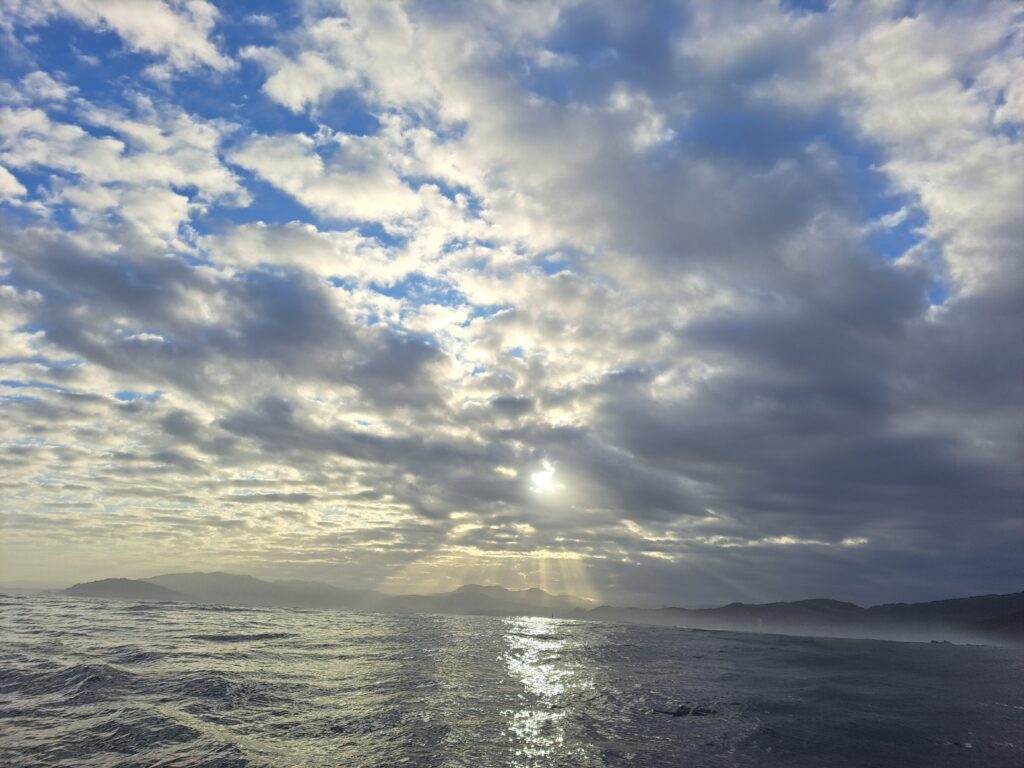
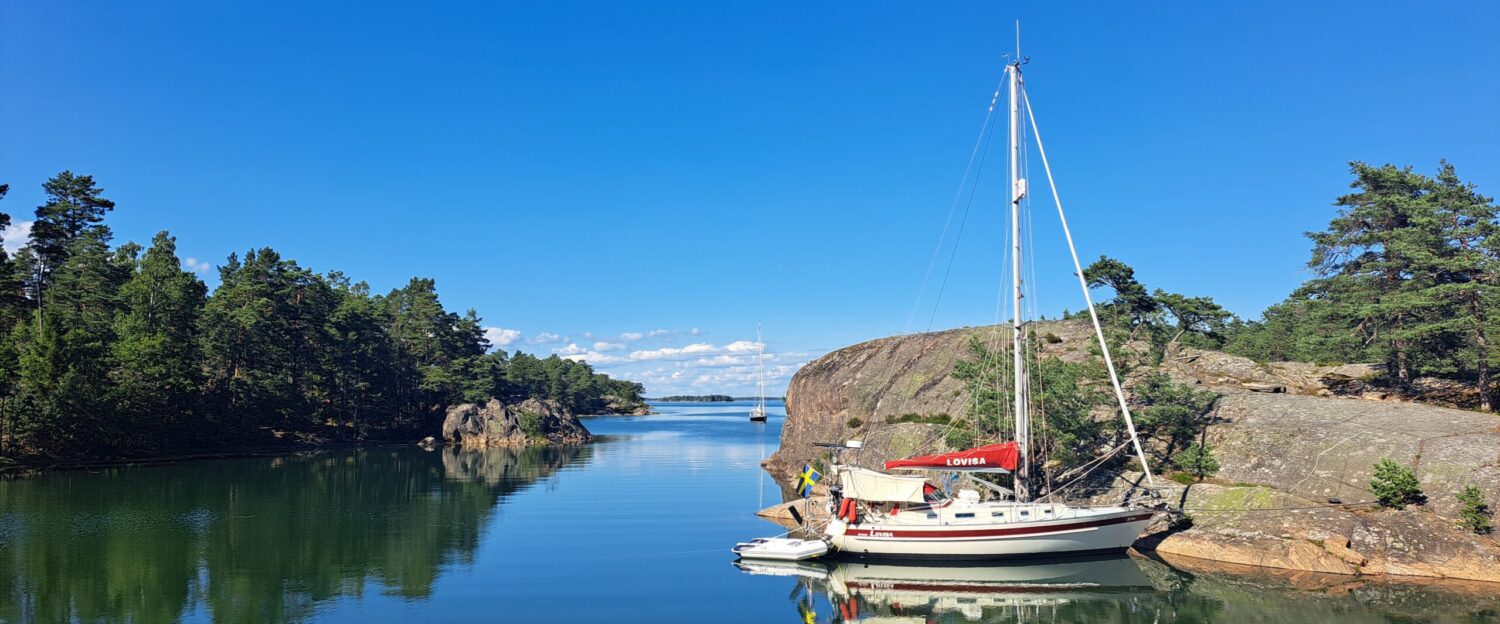
Une vraie aventure, ce périple. Beaucoup de rencontres, d’entraide, et de bonne nourriture 🙂
Enjoy!
Oh oui, une belle aventure ! un superbe voyage ! Vous en profitez, et vous avez tellement raison !!
Et merci pour vos si belles photos.
Bisous
ET… je ne vois pas trop bien ce que peut représenter le personnage sculpté sur les deux colonnes… Qu’est-ce donc ?
C’est une sculpture qui s’appelle,”El Sireno” en espagnol ou l’homme poisson. Un poisson dans un corp d’homme, comme l’opposé d’une sirène.